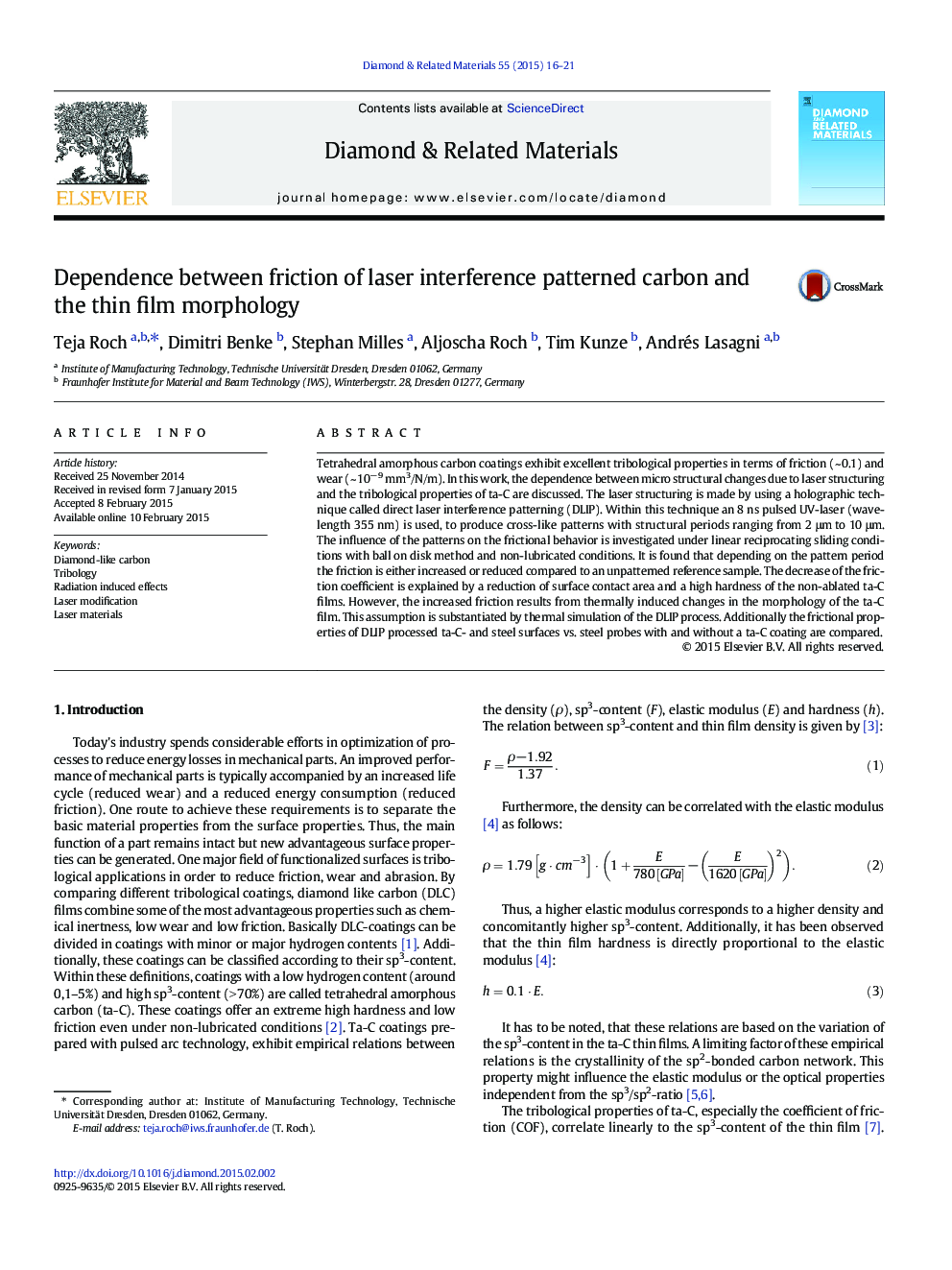| Article ID | Journal | Published Year | Pages | File Type |
|---|---|---|---|---|
| 700666 | Diamond and Related Materials | 2015 | 6 Pages |
•Friction reduction of 30%–60% in non-lubricated friction•Micro structured tetrahedral amorphous carbon coatings•Cross-like patterns with periods between 2 μm to 10 μm•Thermal simulation of laser interference patterning of amorphous carbon coatings•Determination of the heat affected zone during direct laser interference patterning
Tetrahedral amorphous carbon coatings exhibit excellent tribological properties in terms of friction (~ 0.1) and wear (~ 10− 9 mm3/N/m). In this work, the dependence between micro structural changes due to laser structuring and the tribological properties of ta-C are discussed. The laser structuring is made by using a holographic technique called direct laser interference patterning (DLIP). Within this technique an 8 ns pulsed UV-laser (wavelength 355 nm) is used, to produce cross-like patterns with structural periods ranging from 2 μm to 10 μm. The influence of the patterns on the frictional behavior is investigated under linear reciprocating sliding conditions with ball on disk method and non-lubricated conditions. It is found that depending on the pattern period the friction is either increased or reduced compared to an unpatterned reference sample. The decrease of the friction coefficient is explained by a reduction of surface contact area and a high hardness of the non-ablated ta-C films. However, the increased friction results from thermally induced changes in the morphology of the ta-C film. This assumption is substantiated by thermal simulation of the DLIP process. Additionally the frictional properties of DLIP processed ta-C- and steel surfaces vs. steel probes with and without a ta-C coating are compared.
Graphical abstractFigure optionsDownload full-size imageDownload as PowerPoint slide
